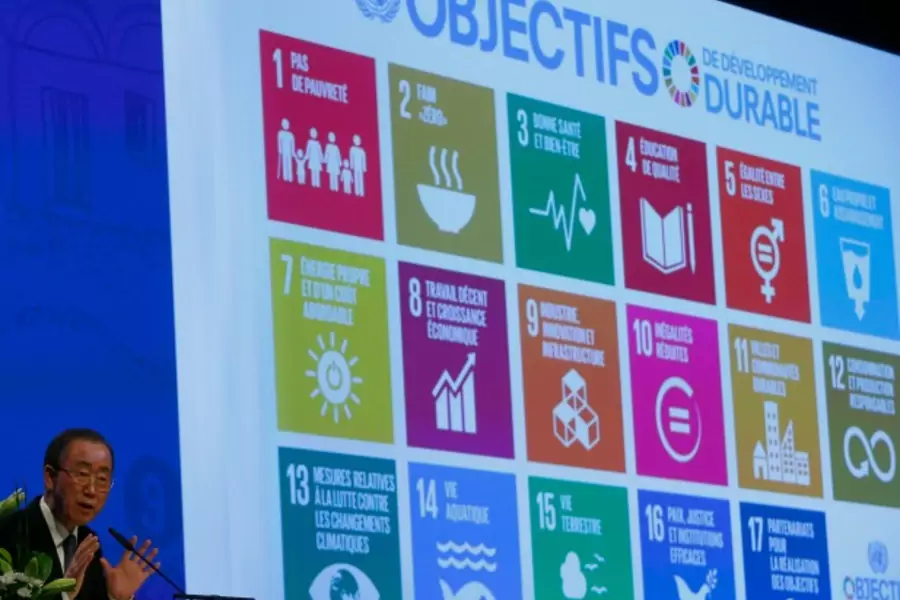SDG 16 and the Corruption Measurement Challenge

More on:
Emerging Voices highlights new research, thinking, and approaches to development challenges from contributing scholars and practitioners. This post is from Niklas Kossow, communications officer for the European Union FP7 ANTICORRP project and the European Research Centre for Anti-Corruption and State-Building. In this post, he considers the challenge of designing evidence-based reforms and measuring success in global development, and describes a new approach to objective measurement in the field of anticorruption and good governance: the Index of Public Integrity.
In September 2015, the United Nations General Assembly passed the sustainable development goals (SDGs) that will define the direction of global development for years to come. Among the seventeen goals that aim to end poverty, reduce inequality, and ensure quality education and healthcare, is Goal 16—a commitment to encouraging good governance. To achieve this, Goal 16 sets twelve specific targets, including promoting the rule of law, ensuring inclusive decision-making, and fighting corruption and bribery.
Good governance as a UN goal would have been a surprise just a few years ago, but its addition to the development agenda reflects the increasing recognition that it affects economic growth, a functioning civil service, and development outcomes, such as better healthcare. In a corrupt system, development aid rarely ends up with those who need it the most.
But measuring good governance—and especially corruption—is difficult, for the SDGs and more broadly. Existing indices, such as Transparency International’s Corruption Perception Index (CPI) and the World Bank’s Control of Corruption indicator (CoC), are perceptions-based surveys that ask experts and citizens to estimate how much corruption exists in a specific country. Though they have successfully raised awareness of corruption as a global problem and informed the policy debate, they are deeply flawed as corruption measures.
As indices that aggregate expert opinions into a single country score, the individual factors experts use to make their judgements about corruption levels are hard to identify. And because these factors are unclear, policymakers are given little guidance as to how to better control corruption and ultimately, improve governance. Additionally, these types of assessments are highly subjective and influenced by recent events. Countries can end up with worse CPI scores after a major corruption scandal is uncovered, or the government begins fighting graft, even though these likely signal a country is getting better at controlling corruption, not worse.
With these shortcomings in mind, the European Research Centre for Anti-Corruption and State-Building (ERCAS) developed a new way to measure corruption: the Index of Public Integrity (IPI). Developed as part of a five-year anticorruption research project funded by the European Commission, and focused on building objective and actionable data, the IPI uses the following six indicators that have proven crucial in fighting corruption:
- Administrative burden: measures the time and number of procedures it takes to start a business and the time and effort it takes to pay taxes;
- Trade openness: measures the number of documents and the time required to complete import and export procedures;
- Budget transparency: assesses the transparency of an executive’s budget proposal and how easily available it is to citizens;
- e-citizenship: looks at the number of internet users, broadband subscriptions, and Facebook users in each country;
- Freedom of the press: measures press freedom based on country scores in Freedom House’s annual Freedom of the Press report.
Empirical research, led by Prof. Alina Mungiu-Pippidi of the Hertie School of Governance, has shown that these six institutional features can either enable or constrain corruption. High administrative burdens, trade barriers, and a lack of budget transparency reflect the “supply side,” giving public officials the opportunity to tap state budgets and extort money from citizens. Judicial independence, freedom of the press, and e-citizenship can affect the “demand side”—constraining corruption by empowering oversight of independent institutions and citizens, and bringing corrupt officials to account.
This new set of indicators also helps policymakers identify areas where countries are performing badly, and where specific reform efforts are needed. For example, the IPI shows that Chile is doing fairly well overall—ranked 26 out of 105 countries globally, and second among its Latin America and Caribbean neighbors. Yet it lags on budget transparency, coming in at 83 out of 105. And Slovakia, ranked 33 out of 105, falls down on judicial independence—coming in at 92 out of 105.
The IPI’s nuance gives governments willing to tackle corruption a roadmap to do so. It can more accurately show what progress countries have made, and whether certain policies helped or failed. For development professionals, these more actionable, objective metrics can help the international community design better policies to meet the SDGs’ targets and goals.
More on:
 Online Store
Online Store